Matchstick Blinds
すだれ
There’s something romantiac about matchstick blinds, especially the Japanese shades that you see in and on traditional homes such as this Machiya. Called Sudare in Japan, hanging Japanese shades around your home is a way to bring an instant rustic charm to your home.
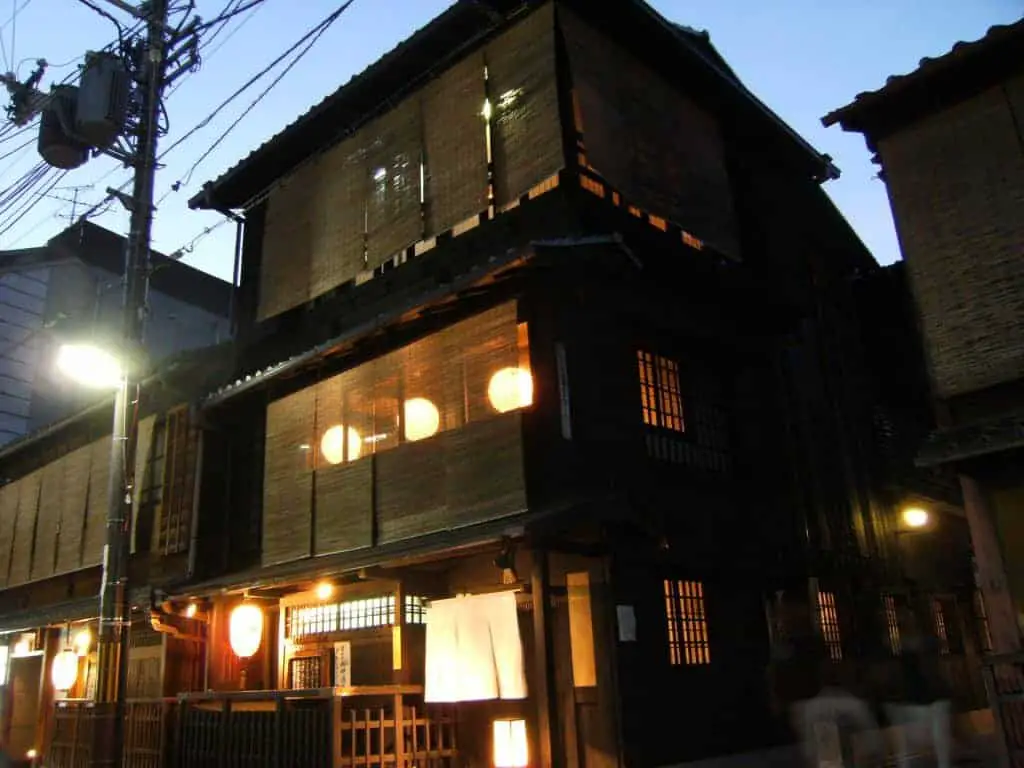
Image: gorian21, CC BY 3.0, https://commons.wikimedia.org/w/index.php?curid=53356982
What are the advantages of matchstick blinds?
Curtains have a way of trapping in heat. Matchstick blinds are made of bamboo or wood, materials that don’t conduct heat well, and have gaps between each stick that allow air to pass and flow. They also have the advantage of being able to be placed outside a room. This means that even if they get so much direct hot rays that they start to heat, the heat dissipates into the open air rather than into your room. They can free up room inside by lessening the need for curtains.
Woven wood and matchstick blinds also maintain a level of transparency in the small gaps between pieces of wood, which means they are ideal for spaces where you still want a view of outside, but don’t want to be open to direct sunlight.
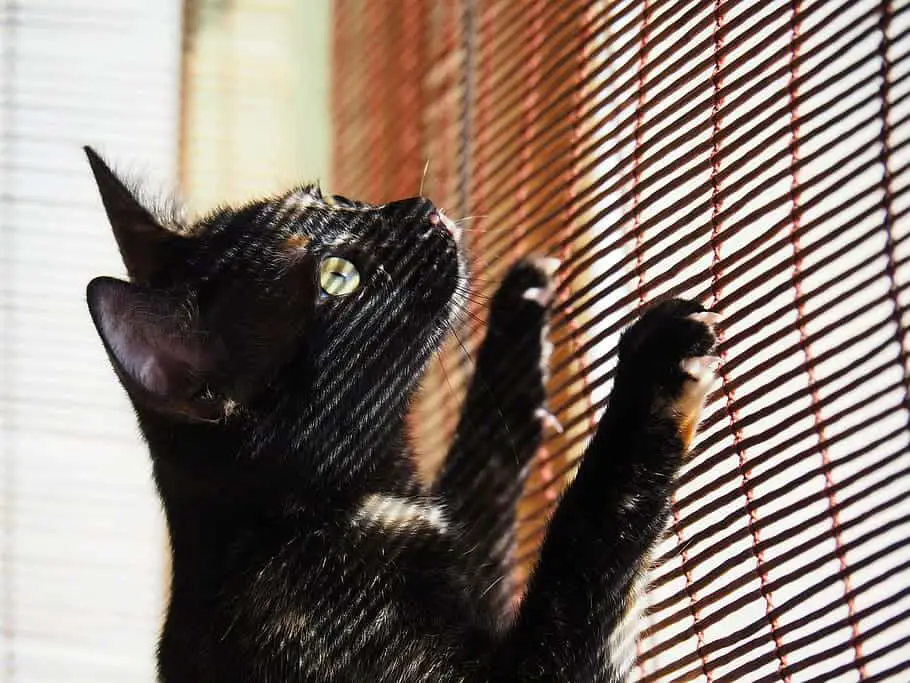
The 3 biggest things to think about when buying Matchstick Blinds
1. Where do you need them
Inside or Outside?
In Japan, they are more commonly used outside, often being placed quite far forward from windows, creating a “2nd-space” effect, almost akin to a quasi-veranda. The idea of having different layers, or lines around a space, that Alex Kerr refers to as limination in his book Another Kyoto, is common in Japanese architecture. Sometimes these blinds will be in line with a Noren hanging curtain at the entrance.
Putting your matchstick blinds outside blocks the heat before it has a chance to come in the room and get you back some indoor space.
On the other hand, matchstick blinds in the outdoors won’t last as blinds indoors. They are also harder to raise or lower as the sun moves and you want to change the level of shade.
2. What size do you need?
This is the obvious one, but, surprisingly often overlooked right back at the start of the searching process. Measure twice, cut once applies to purchasing as well. It can be worth investing in shades that are custom made to the size you require.
3. What are matchstick blinds made of?
The most common material for matchstick blinds is bamboo. In the wider category of woven wood blinds, you will find a large range of woods used, usually cut into larger pieces than the matchstick style blinds. More recently, you increasingly find blinds made of synthetic materials also.
Japanese shades are either made of bamboo or reeds (ashi).
So we’ll get into more details about choosing the best blind below but if you just want to know what our top recommendations are then here’s our top three.
#1 Bamboo Blinds by GX & XD
Pros
- Fine Bamboo Weave
- EXTERIOR AND INTERIOR USE: Ideal For Patio Or Porches, But Can Also Be Used indoors.
- Install on window or door frame with two provided hooks
- Simple, rustic design
- All hardware and instruction included
Cons
- Corded – can be dangerous for young children when not installed correctly
#2 Bamboo Blinds by PLLP
Pros
- Exterior or Interior Uses
- Solid, Durable Upper Rale
- Simple, rustic design
- All hardware and instruction included
Cons
- No custom installation hardware
- Corded – can be dangerous for young children when not installed correctly
#3 Bamboo Blinds by PLLP
Pros
- Indoor or Outdoor Use
- Distinctive Light & Shade Design
- Hand-woven, exquisite workmanship,it is the best choice for your home decoration.
- Various Sizes
Cons
- No custom installation hardware
- Various sizes available, but no custom size offer
- Corded – can be dangerous for young children when not installed correctly
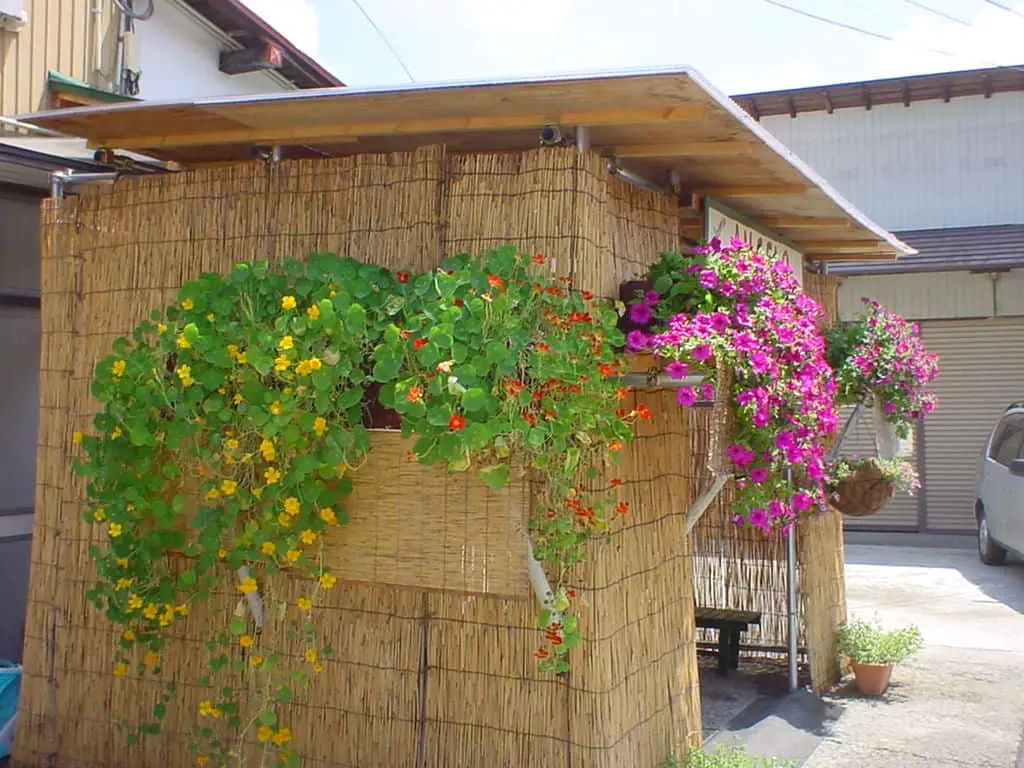
How To Hang Matchstick Blinds – Is it Easy?
One of the attractions about matchstick blinds is that they are generally super easy to hang. If you can manage to put up a couple of hooks to hold up your blinds, then that’s usually about all you really need to figure out.
That being said, some of the blinds do come with their own custom mounting systems and they can get as complex or as simple as you want them to be. At the risk of sounding facetious, how long is a piece of string?
Should you put lining on the back of bamboo blinds?
Some people do choose to put lining on the back woven wood or matchstick blinds. They do this to either increase the privacy provided by the blinds, or provide insulation and/or protection from the elements.
The trade-off in doing this is that you are often getting rid of many of the things that make matchstick blinds attractive in the first place ie their ability to provide shade while still allowing air to circulate through them and their tendency to disperse, and not hold in, heat.
Do matchstick blinds provide privacy
Matchstick blinds are generally fairly see through, so are not a good option if you are wanting to maintain a level of privacy. This being said, this is one of the very things that actually makes people like these blinds. If you have a nice view, you can get shade while still being able to make out, say, the beautiful mountain or fields in the distance. They also can be used to create a sense of intrigue by allowing people outside to see in somewhat without being able to get “the full picture”. In ancient times in Japan, people granted an audience with the Emperor would see him through a matchstick blind, to facilitate communication without revealing all of the regent’s mystery.
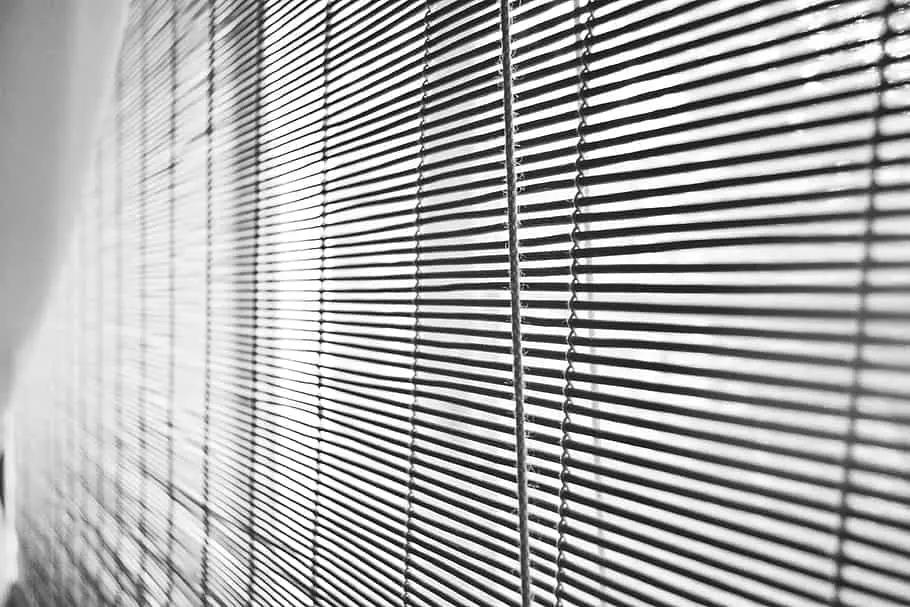
#4 Painted Bamboo Blinds
Pros
- Feature piece with Sumi-E style grosing bamboo illustration
- Indoor or Outdoor Use
- Distinctive Light & Shade Design
- Various Sizes
- Includes installation hardware
Cons
- Picture design not suitable for all spaces
- Various sizes available, but no custom size offer
- Corded – can be dangerous for young children when not installed correctly
#5 Dark Bamboo Shades
Pros
- All natural materials
- Distinctive dark tone
- Interior or exterior use
- Elegant drawstring Design
- All hardware and instruction included
- Includes mounting equipment and instructions
Cons
- Corded – can be dangerous for young children when not installed correctly
Japanese Shades and bamboo blinds in Japan
Types of Japanese blinds
Japanese bamboo blinds can be widely separated into Kakesudare 掛け簾 (Hung Sudare) and Tate Sudare 立て簾 (Standing Sudare). The hung blinds are the ones that most people would be relatively familiar with. Within Standing Sudare, the most common is the Yoshizu 葦簀. Yoshizu are named after the reed called Yoshi, from which they are made of. They are large panels of weaved reed that are leaned against a space to provide shade.
Within Sudare, the classical style that characteristically uses green cloth or brocade edging are known as Misu. These are the sort that are depicted in classical works including the Tale of Genji and were often used to divide the large open rooms of aristocratic and ruling military classes. They tend to make a feature of the draw strings and tassels used to hold and draw the blinds.
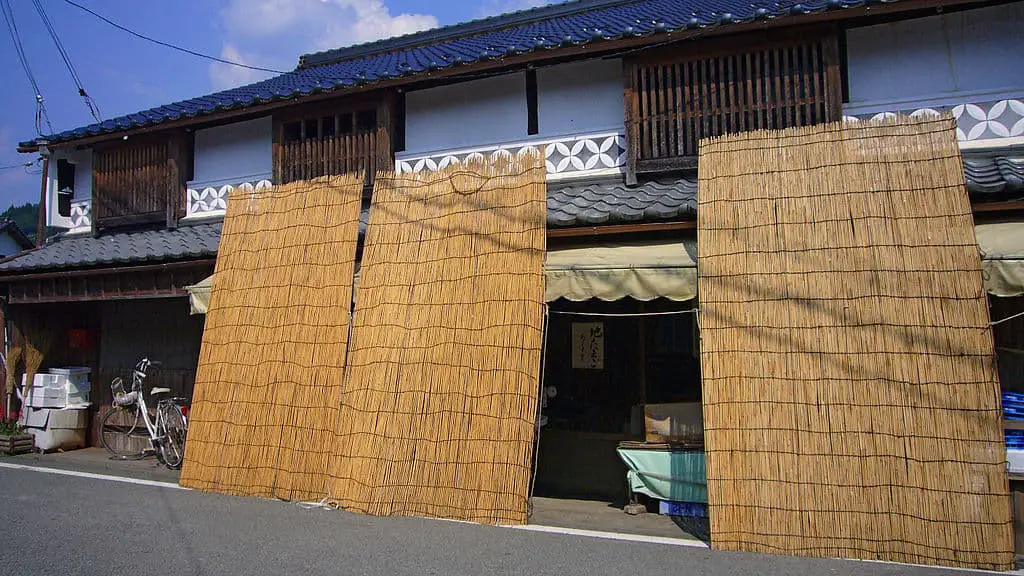
Japanese blinds in Japanese culture
Sudare are referenced as far back as the Manyoshu 万葉集, the oldest known anthology of Japanese poetry from the 8th century.
Japan has various more or less set words, called Fubutsushi 風物詩, that are considered symbols of the seasons. Sudare can be used as a shorthand indicator of the season of summer in Japan. Instead of saying in a poem “summer came and we were hot” you could say “the sudare barely swayed as the people struggled to sleep” and no one would doubt what time of the year the action was taking place in.

Japanoscope uses affiliate links. Which means we may receive commisions when you click on some product links. We only link to products we believe in, use ourselves or think are genuinely good. This helps us keep all of the content on the site free of charge. As Monty Python once said, “We’re selling records in the foyer. Some of us have gotta eat too you know”.
Other Recommended Japanese Home Items
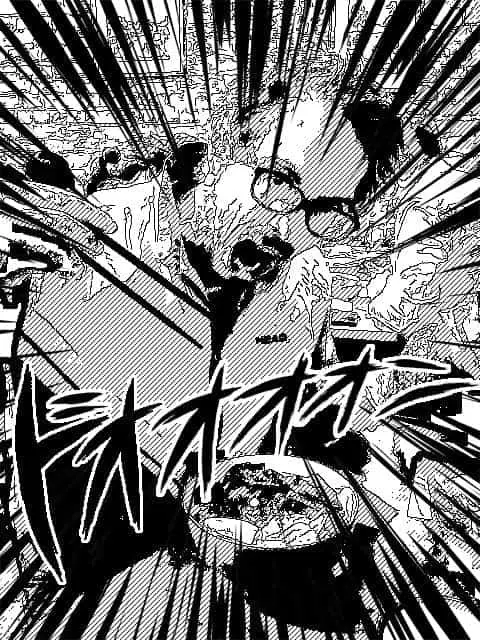
Contributor
Hi, I’m Peter. I lived in Japan for four years as a University student completing a Masters Degree in Musicology. I have succesfully completed the highest level of the Japanese Language Proficiency Test (N1). I have toured the country six times playing music and singing songs in Japanese and English.
